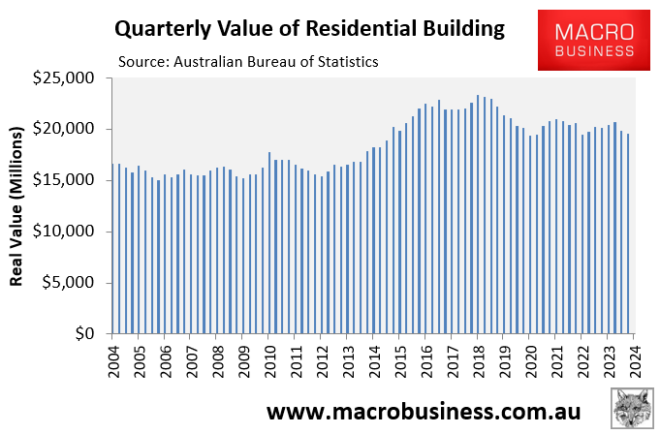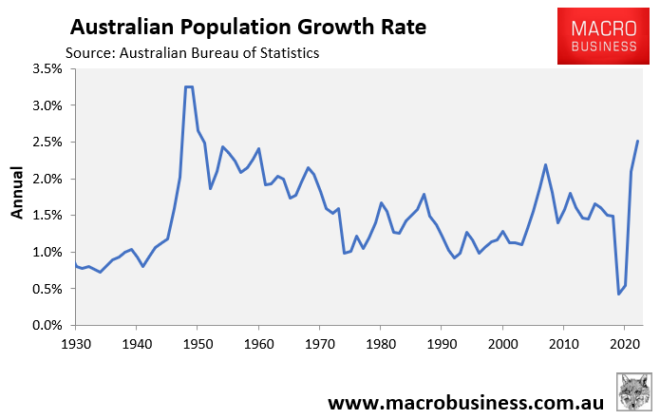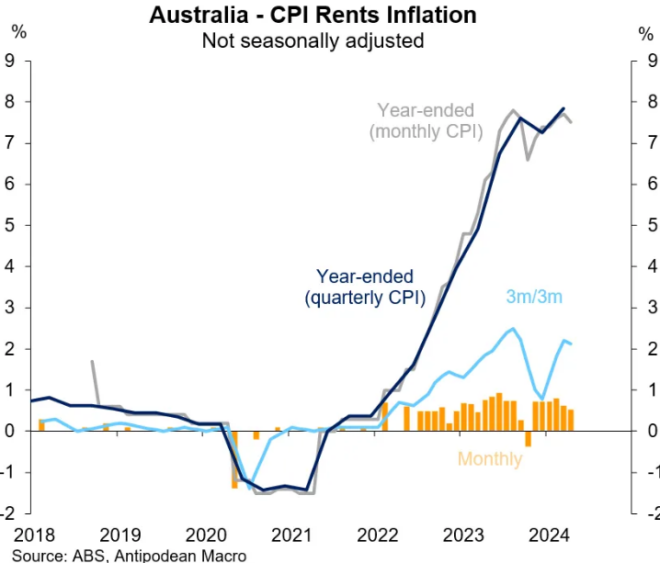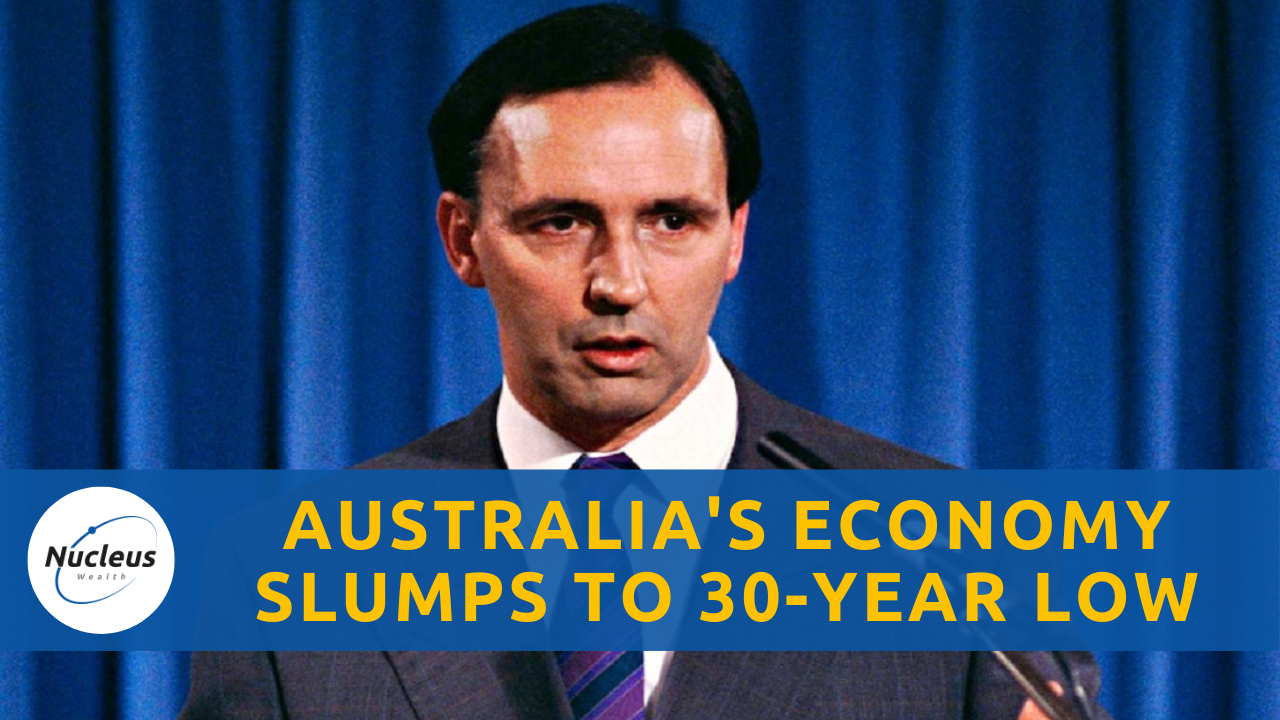The March quarter national accounts, the most comprehensive measure of economic activity, will be released on Wednesday.
The national accounts are expected to confirm that the household sector remains in recession.
Partial data already shows that retail spending volumes fell in the quarter, and fell in per capita terms.

A further contraction in dwelling investment will also weigh on growth, while business investment has at least remained a bright spot for the economy.

Economists expect the national accounts to show that the economy expanded by anywhere between 0.0% (NAB) and 0.3% (JPMorgan) in the March quarter and by 1.0% to 1.3% over the year.
An annual growth rate of just 1.0% would represent the slowest rate of economic growth since the early-1990s recession, with the exception of the pandemic.
Worse, this growth will have been achieved with the population growing at its fastest pace since the 1950s.

The only upside is that the economy’s slump will prevent the Reserve Bank of Australia from hiking rates even with CPI inflation remaining higher than expected.
“For now, the weakness on the activity side is likely to see the RBA hold off on any further increases in the cash rate as it looks forward to the downstream impacts of slower growth and balances the risk of a faster deterioration in the labour market”, NAB noted on Friday.
“That said, with a high bar for further hikes, still high inflation points to the risk of a longer period of stability in rates”.
Australia’s economy looks to be entering a period of stagflation characterised by falling per capita growth and stubbornly high inflation.
The only thing preventing an outright technical recession is the Albanese government’s record immigration program, which is growing the overall economic pie, while everyone’s share of the pie shrinks.
However, this turbo-charged immigration is also putting upward pressure on CPI inflation, most notably via the housing market, which is preventing the RBA from cutting rates.

It is a nightmare situation for individual Australians’ living standards.

